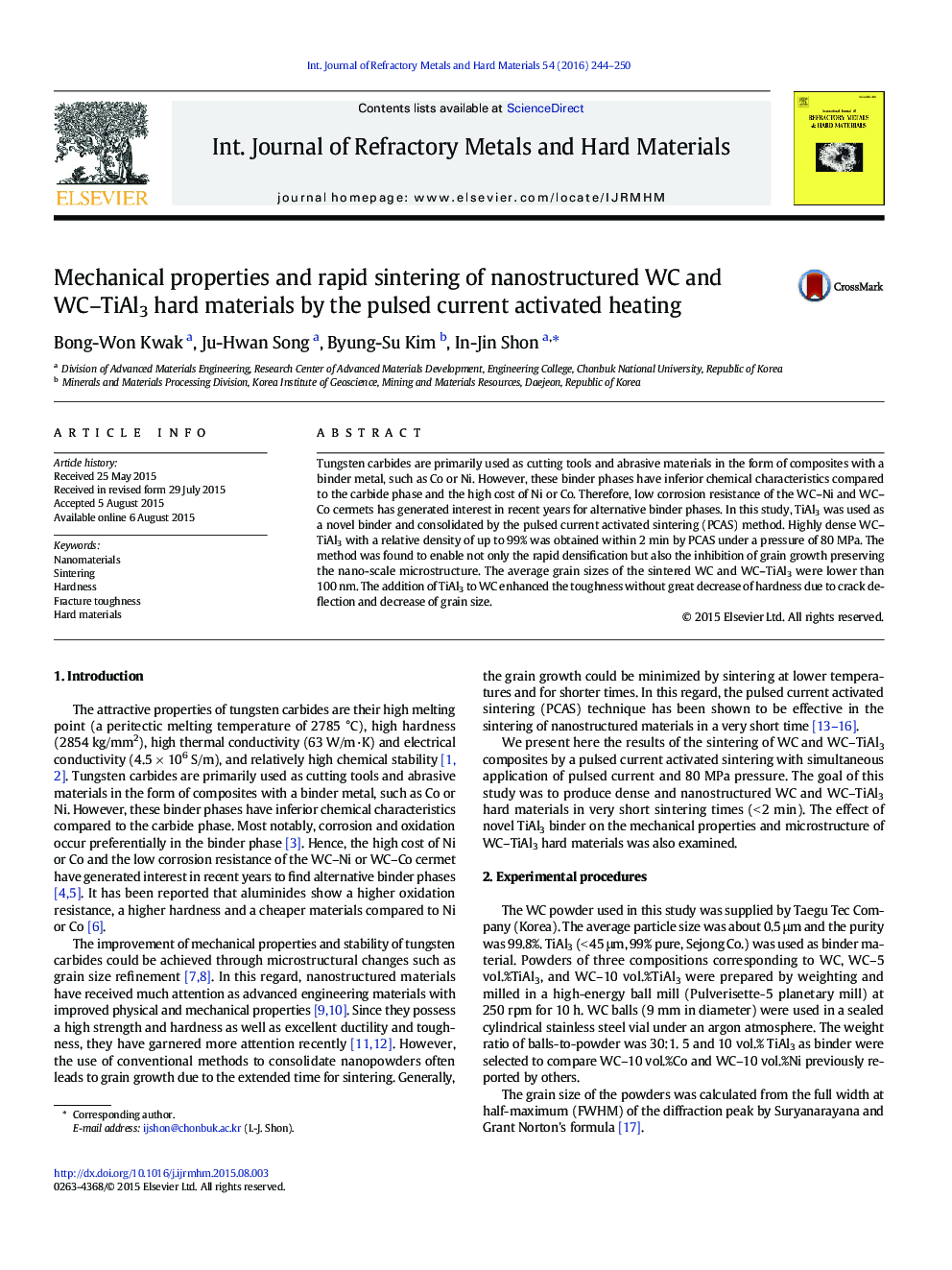| Article ID | Journal | Published Year | Pages | File Type |
|---|---|---|---|---|
| 1602862 | International Journal of Refractory Metals and Hard Materials | 2016 | 7 Pages |
•Nearly full-dense nanostructured WC-TiAl3 composites could be obtained within 2 min.•The addition of TiAl3 to WC improved the fracture toughness of cemented WC without great reduction of hardness.•It is believed that WC and TiAl3 in the composite may deter the propagation of cracks.
Tungsten carbides are primarily used as cutting tools and abrasive materials in the form of composites with a binder metal, such as Co or Ni. However, these binder phases have inferior chemical characteristics compared to the carbide phase and the high cost of Ni or Co. Therefore, low corrosion resistance of the WC–Ni and WC–Co cermets has generated interest in recent years for alternative binder phases. In this study, TiAl3 was used as a novel binder and consolidated by the pulsed current activated sintering (PCAS) method. Highly dense WC–TiAl3 with a relative density of up to 99% was obtained within 2 min by PCAS under a pressure of 80 MPa. The method was found to enable not only the rapid densification but also the inhibition of grain growth preserving the nano-scale microstructure. The average grain sizes of the sintered WC and WC–TiAl3 were lower than 100 nm. The addition of TiAl3 to WC enhanced the toughness without great decrease of hardness due to crack deflection and decrease of grain size.
Graphical abstractBinderless nanostructured WC (a) and WC–TiAl3 (b) with relative density of 99% was sintered within 2 min by pulsed current activated heating.Figure optionsDownload full-size imageDownload as PowerPoint slide
